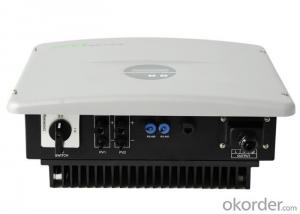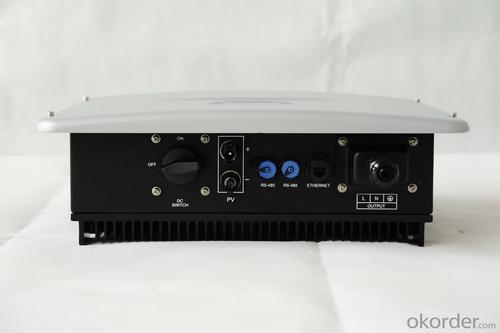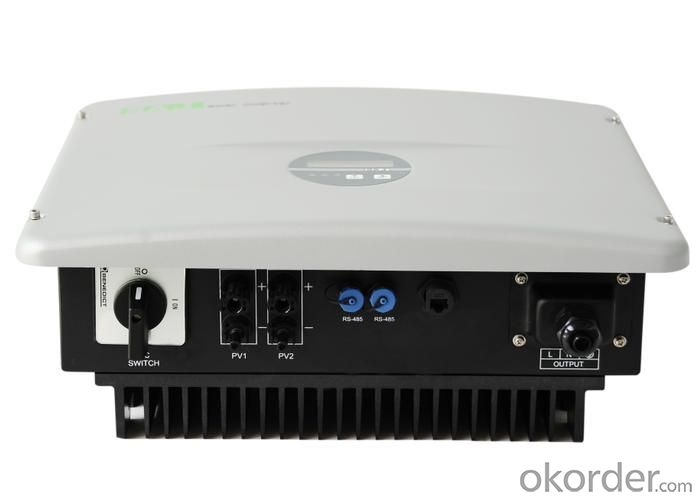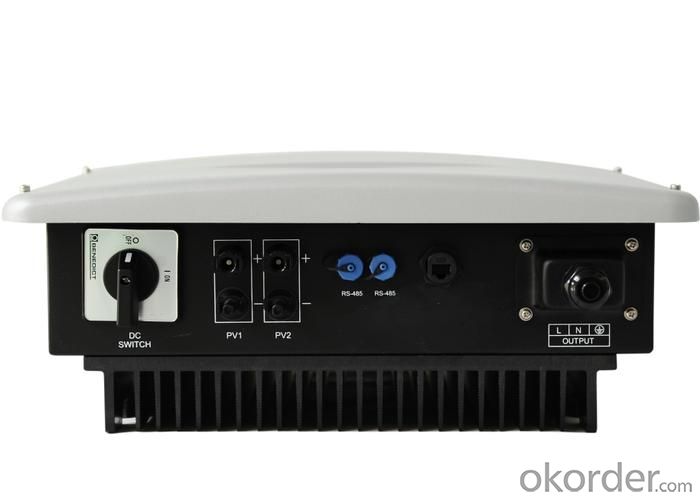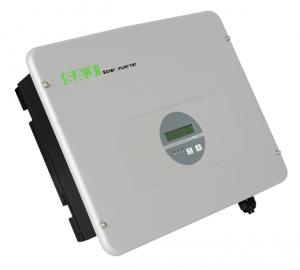Solar Inverter Board Sununo-TL1.5K,1 MPPT
- Loading Port:
- Guangzhou
- Payment Terms:
- TT OR LC
- Min Order Qty:
- 1 pc
- Supply Capability:
- 3000 pc/month
OKorder Service Pledge
OKorder Financial Service
You Might Also Like
The Sununo-TL1K/1.5K/2K solar inverter offers a range of benefits, including maximum energy harvesting,
through both its highspeed Maximum Power Point Tracker (MPPT) and transformerless technology.Combing the wide input voltage range makes the inverter suitable to low power installations with reduced string size.
The LCD display is to check real-time performance through its integrated data logger and more communication interfaces make it convenient for remote performance monitoring. The Sununo-TL1K/1.5K/2K is an ideal inverter for smaller residential PV plants.
Futures:
■Super junction MOSFET integrated with 97.4% Max. efficiency.
■ Wide MPPT voltage range and low minimum MPPT voltage for flexible configuration.
■ Transformerless design for lower cost and compact size.
■ IP65 and fan-less for longer-term reliability.
■ Ethernet/ Wi-Fi communication interface.
■ Integrated Web Server for local and internet monitoring.
■ Support SAJ Web Portal Monitoring Solutions.
Technical data:
| Model | Sununo-TL1K | Sununo-TL1.5K | Sununo-TL2K |
| Max. DC power [W] | 1200 | 1800 | 2300 |
| Max. DC voltage [V] | 480 | 480 | 480 |
| MPPT DC voltage Range [V] | 90-425 | 100-425 | 100-425 |
| Nominal DC voltage [V] | 360 | 360 | 360 |
| start voltage [V] | 100 | 150 | 150 |
| Min.DC voltage [V] | 80 | 100 | 100 |
| Max.DC input current [A] | 10 | 11 | 12 |
| Number of MPPT | 1 | 1 | 1 |
| string per MPPT | 1 | 1 | 1 |
| DC switch | optional | optional | optional |
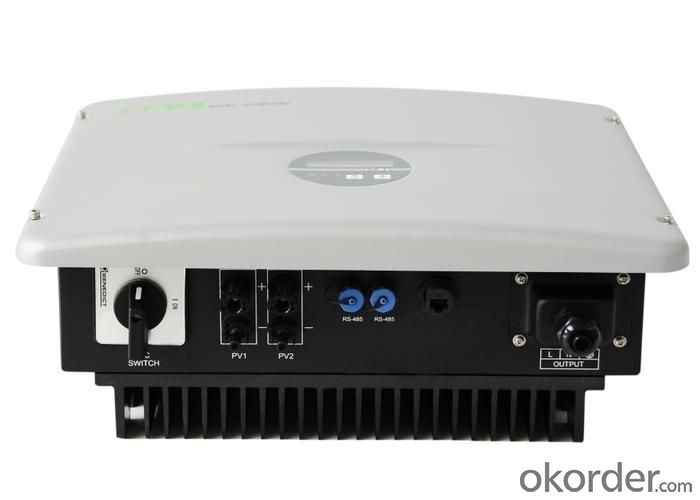

1. How can I get after sale service?
We have established after sale service center in Europe, North America, south East Asia, etc. you can email us or call the hot line.
2. Do you have shipping insurance for our goods?
We will buy shipping insurance according to customers’ demand.
3. Do you accept OEM or customized design?
OEM & ODM, any your customized lightings we can help you to design and put into product.
4. What if I need specific design?
Distributorship are offered for your unique design and some our current models.
- Q: Can a solar inverter be connected to the grid?
- Yes, a solar inverter can be connected to the grid. In fact, this is one of the main purposes of a solar inverter – to convert the direct current (DC) electricity generated by solar panels into alternating current (AC) electricity that can be used in homes and businesses or fed back into the grid. Connecting a solar inverter to the grid allows for the utilization of solar energy while also providing the opportunity to sell excess power back to the grid, contributing to renewable energy generation and potentially offsetting electricity costs.
- Q: What is the role of a solar inverter in preventing electrical faults?
- The role of a solar inverter in preventing electrical faults is to convert the direct current (DC) electricity generated by solar panels into alternating current (AC) electricity that can be used in homes and businesses. In doing so, the inverter helps maintain a stable and consistent flow of electricity, which reduces the risk of electrical faults such as short circuits, overloads, or voltage fluctuations. It also includes various protection mechanisms, such as ground fault detection and interruption, to ensure the safety and reliability of the solar power system.
- Q: What is the role of capacitors in a solar inverter?
- The role of capacitors in a solar inverter is to store and release electrical energy in order to regulate and smooth out the flow of power. They help to stabilize the voltage levels, filter out any fluctuations or noise in the electrical signal, and provide a reserve of power for sudden increases in demand. Capacitors also improve the overall efficiency and performance of the solar inverter by reducing the strain on other components and preventing damage from power surges or spikes.
- Q: What are the potential risks of overheating a solar inverter?
- The potential risks of overheating a solar inverter include reduced efficiency and decreased lifespan of the inverter, potential damage to internal components, increased risk of electrical fires, and potential disruptions to the solar power system's operation.
- Q: Can a solar inverter be used in regions with high levels of air pollution?
- Yes, a solar inverter can be used in regions with high levels of air pollution. The performance of the solar inverter may be slightly affected due to the reduced sunlight reaching the solar panels, but it can still convert the available solar energy into usable electricity. Regular maintenance and cleaning of the solar panels may be required to mitigate the impact of air pollution on their efficiency.
- Q: What is the lifespan of the warranty on a solar inverter?
- The lifespan of a warranty on a solar inverter can vary depending on the manufacturer and the specific model. However, most warranties typically range from 5 to 10 years, with some higher-end inverters offering warranties up to 25 years. It is important to carefully review the warranty terms and conditions provided by the manufacturer to understand the coverage and duration of the warranty.
- Q: Can a solar inverter be used with a hybrid solar power system?
- Yes, a solar inverter can be used with a hybrid solar power system. A hybrid solar power system typically consists of both solar panels and a secondary power source, such as batteries or a diesel generator. The solar inverter converts the direct current (DC) power generated by the solar panels into alternating current (AC) power that can be used to power appliances and devices in the home or business. Additionally, the solar inverter can also manage the flow of power between the solar panels, the batteries, and the grid, optimizing energy usage and ensuring a reliable power supply.
- Q: Are there any limitations on the angle of the solar panels when using a solar inverter?
- Yes, there are limitations on the angle of the solar panels when using a solar inverter. The optimal angle for solar panels is typically determined based on the geographical location and the season. Deviating too much from the recommended angle can result in decreased energy production.
- Q: What is the role of fault ride-through capability in a solar inverter?
- The role of fault ride-through capability in a solar inverter is to ensure the uninterrupted operation of the inverter during grid faults or disturbances. It allows the inverter to remain connected to the grid and continue generating power, even in the presence of temporary voltage dips or interruptions. This capability is essential for grid stability and reliability, as it helps prevent power outages and disruptions in the event of faults in the grid.
- Q: What is the role of a solar inverter in a solar-powered electric fence?
- The role of a solar inverter in a solar-powered electric fence is to convert the direct current (DC) electricity produced by the solar panels into alternating current (AC) electricity, which is required to power the electric fence. The solar inverter also regulates and stabilizes the voltage and frequency of the electricity to ensure proper functioning of the electric fence system.
Send your message to us
Solar Inverter Board Sununo-TL1.5K,1 MPPT
- Loading Port:
- Guangzhou
- Payment Terms:
- TT OR LC
- Min Order Qty:
- 1 pc
- Supply Capability:
- 3000 pc/month
OKorder Service Pledge
OKorder Financial Service
Similar products
Hot products
Hot Searches
Related keywords

